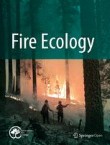Fire Ecology is the official journal of the Association for Fire Ecology.
Pile Burning Effects on Soil Water Repellency, Infiltration, and Downslope Water Chemistry in the Lake Tahoe Basin, USA
Thinning of conifers followed by pile burning has become a popular treatment to reduce fuel loads in the Lake Tahoe Basin, USA. However, concern has been voiced about burning within or near riparian areas beca...
